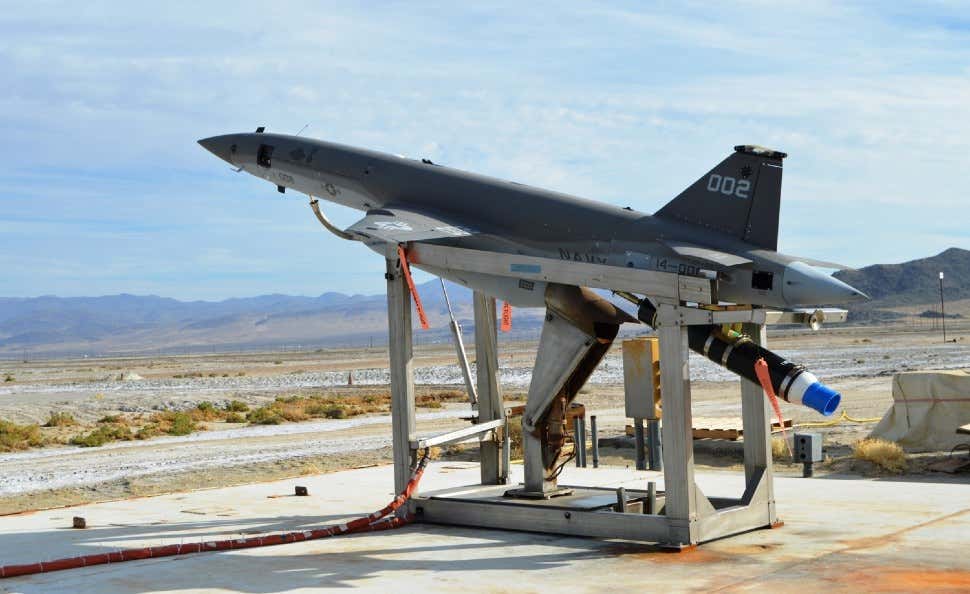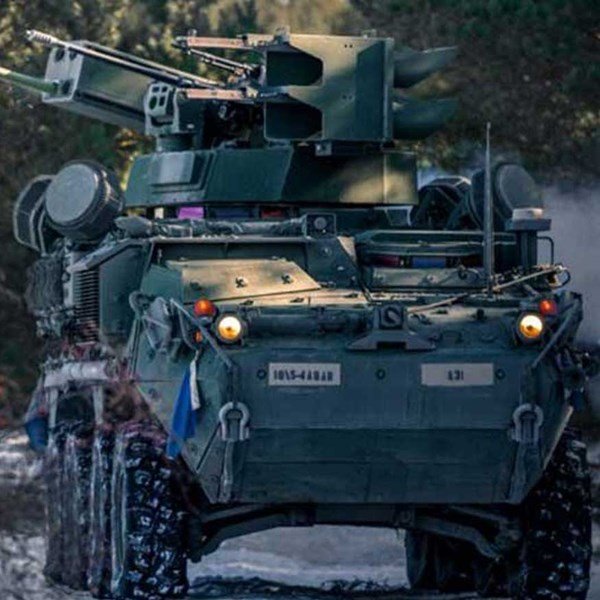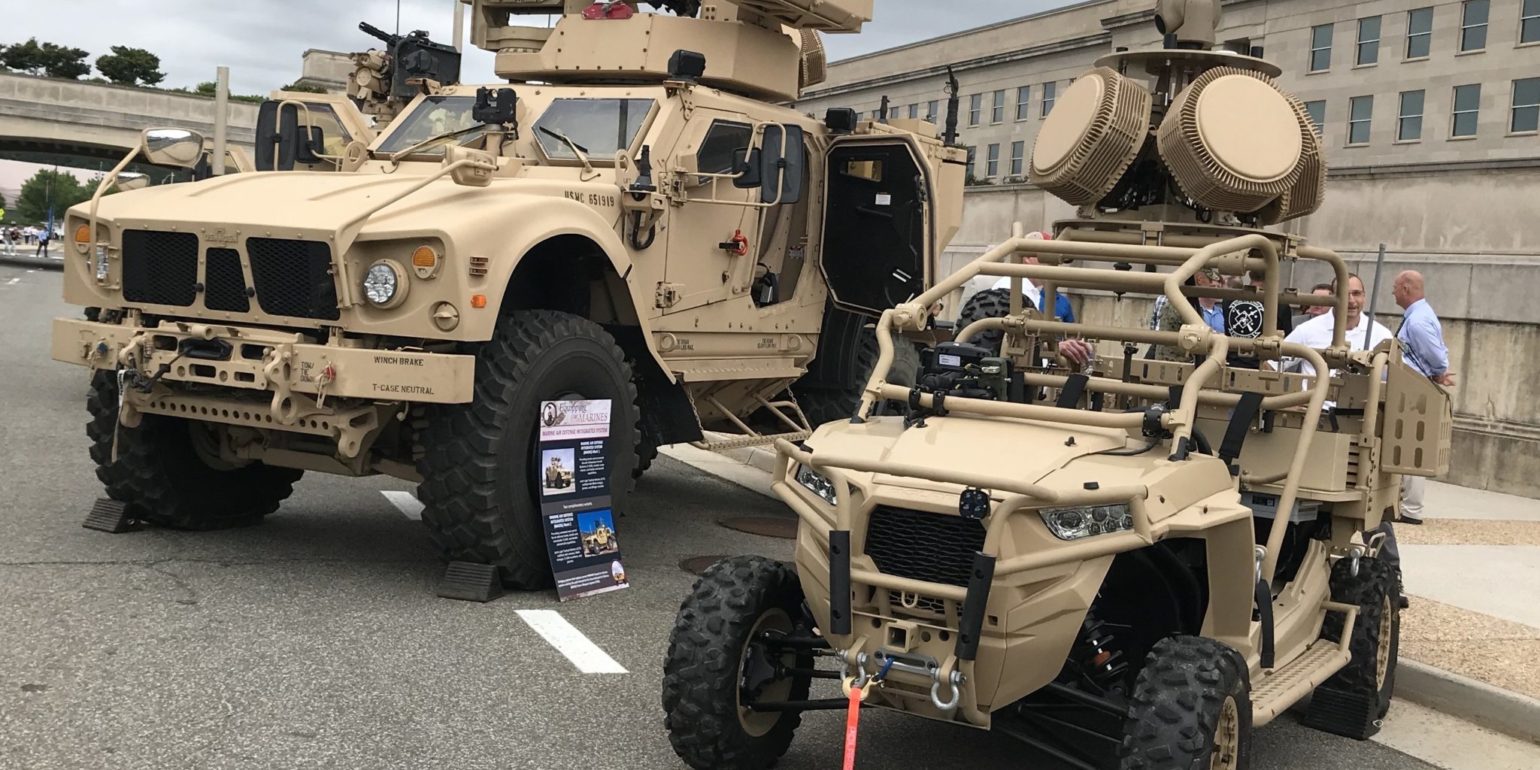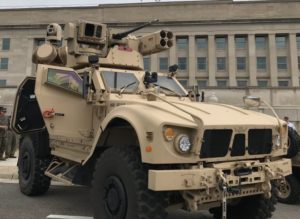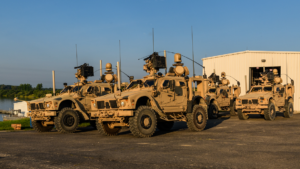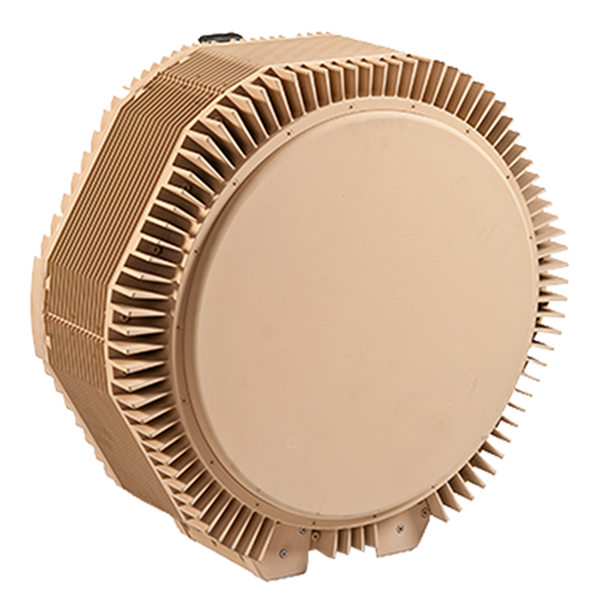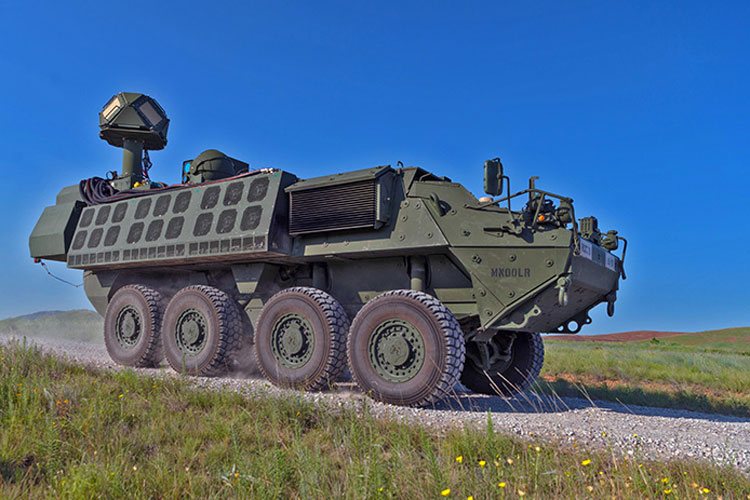The MADIS system relies on two vehicles per section working in a complementary pair, the MADIS Mk1 and Mk2.
[iv] The MADIS Mk1 will be responsible for primarily neutralizing fixed and rotary-wing aircraft. The Mk2 will fulfill the Counter-Unmanned Aircraft System (C-UAS) mission, while also providing radar and C2 for the pair. The Marine corps also has the Light MADIS (LMADIS), which hosts the radar and EW suite on a Polaris MRZR. The LMADIS served as a testbed and interim C-UAS solution before the fielding of the MADIS Mk1 and Mk2. The LMADIS is still in operational use with Marine Corps LAAD battalions.
Mk1
(Photo: USNI News )
For kinetic weapons, the Mk1 variant possesses a missile pod holding 4 Stinger missiles. The main direct fire weapon on the turret is a 30mm cannon. Inside the vehicle are handheld Stinger launchers to be used by the crew. The optical sensors for the weapons system is produced by Lockheed Martin.
The electronic warfare system is the Modi II produced by Sierra Nevada Corporation (SNC). It is the most advanced dismounted electronic countermeasure (ECM) system in the DoD inventory. It can be used to disrupt enemy drones, communications, and radio-controlled improvised explosive devices (RCIED). Using electronic warfare, air defenders can trick or “spoof” the drone’s navigation system, jam its communications by separating its data link, or defeat fuses and weapons’ triggers
[v] The Modi II is the successor to the Thor II/AN PLT-5 and Thor III AN/PLQ-9.
[iii]
Mk2
(Photo: Marine Corps Systems Command GBAD PEO)
The radar on the MADIS Mk2 is the RPS-42 produced by RADA Electronic Industries Ltd. What makes the radar so unique is that it is able to detect the extremely small radar cross-sections of commercial, off-the-shelf drones that have been proliferated on the modern battlefield by nonstate actors for lethal and nonlethal purposes. The RPS-42 is able to identify and detect targets flying at an altitude of 30 to 30,000 ft within a 30km radius.
[vi]
The electronic warfare system is the Modi II, the same as the Mk 1 variant.
The direct-fire weapon on the MADIS Mk2 is an M134 Minigun, a 7.62x51mm NATO six-barrel rotary machine gun with a high, sustained rate of fire (2,000 to 6,000 rounds per minute).
[vii]
The Mk 2 as part of its C2 capability will possess a Beyond Line of Sight (BLOS) gateway/server capability.
[viii] This will allow the pair to engage targets being spotted by other ground-based radar in the same network.




